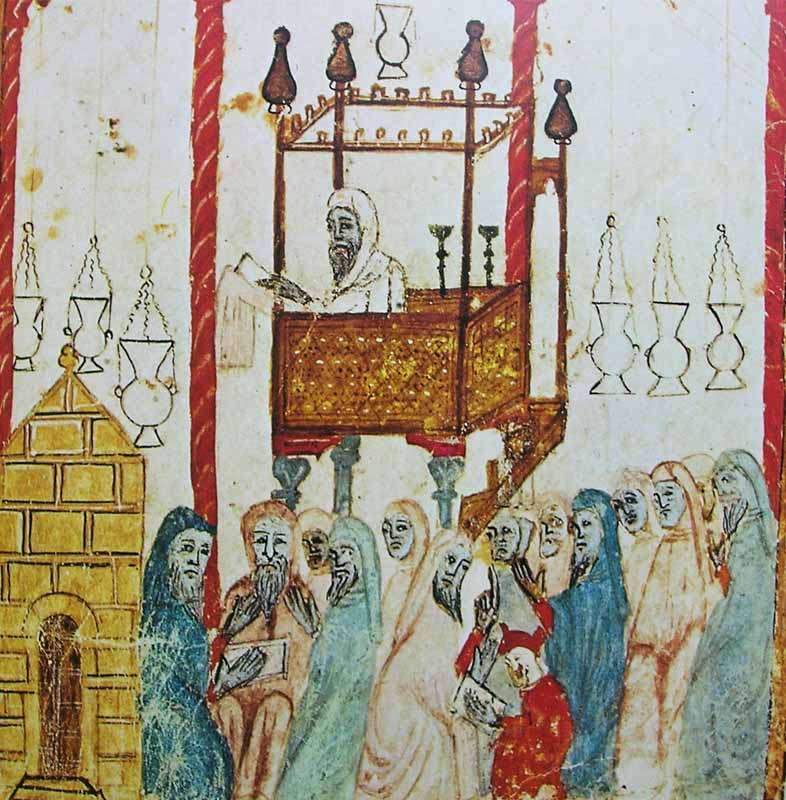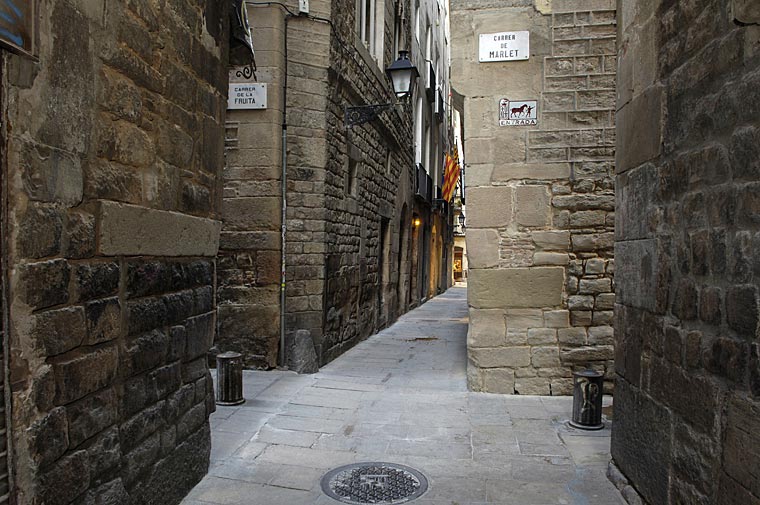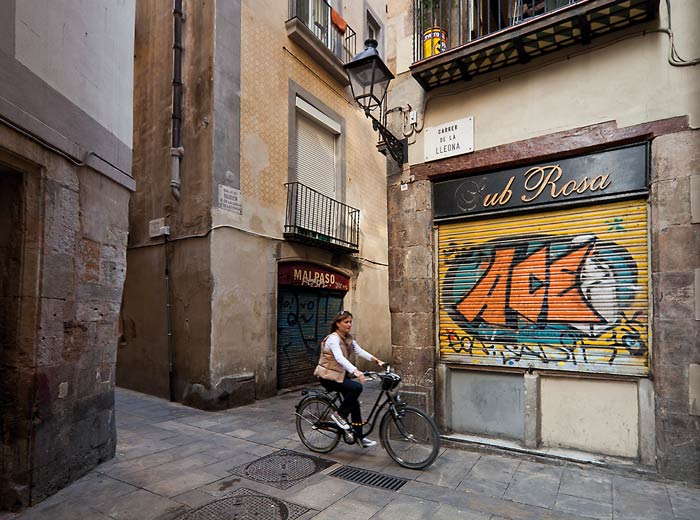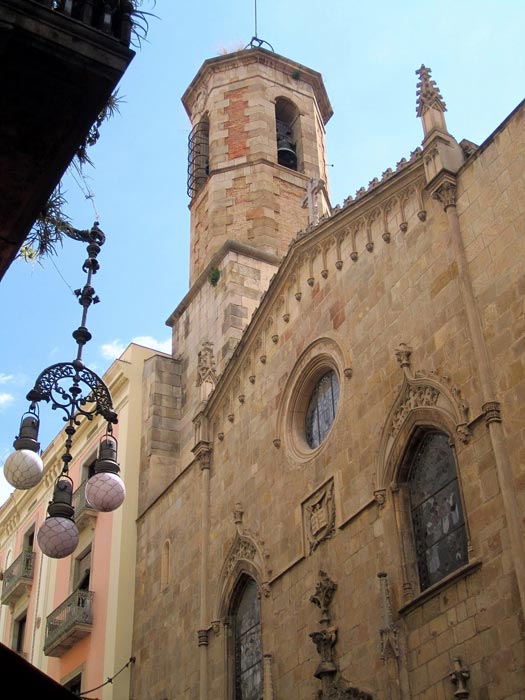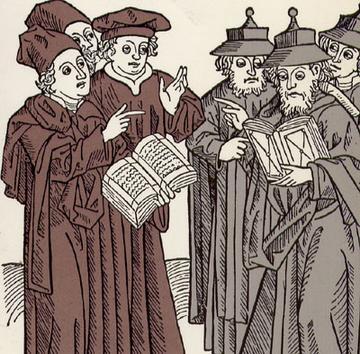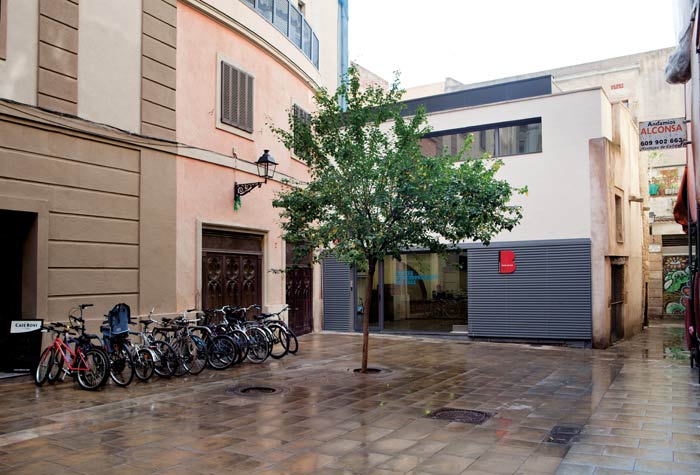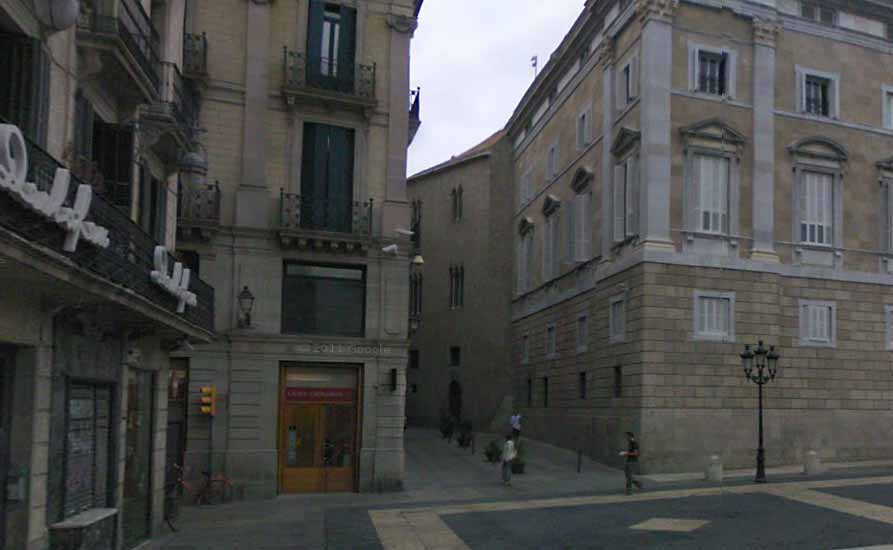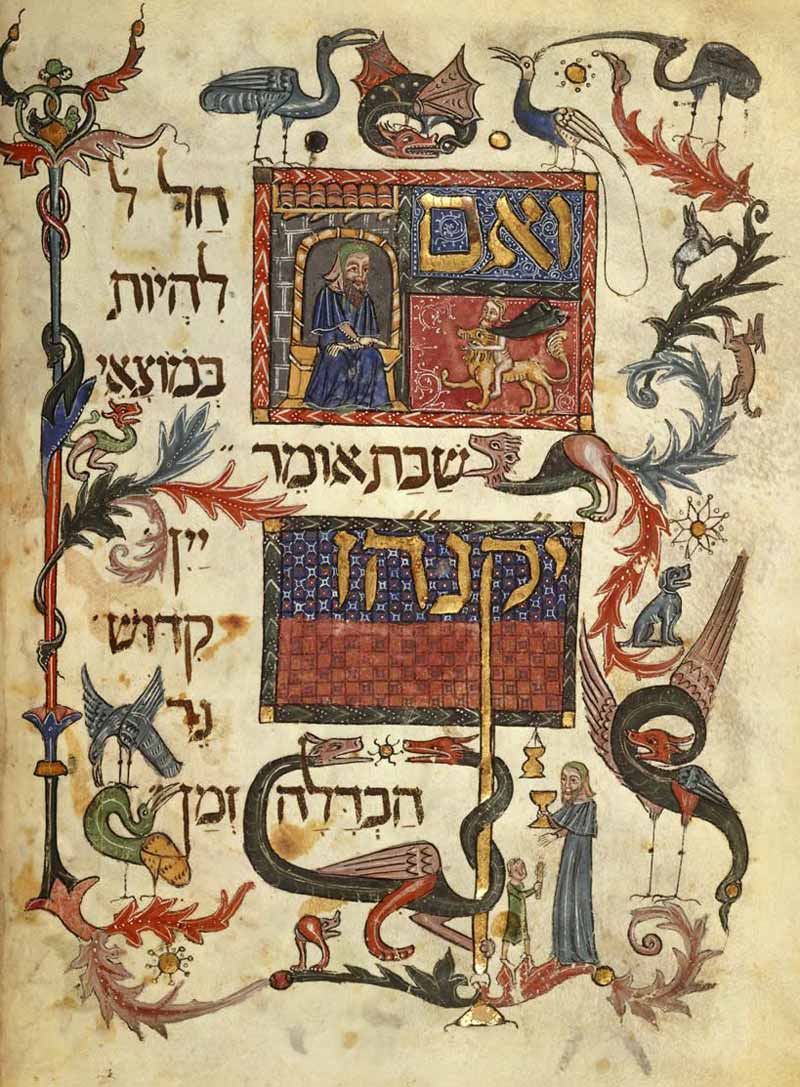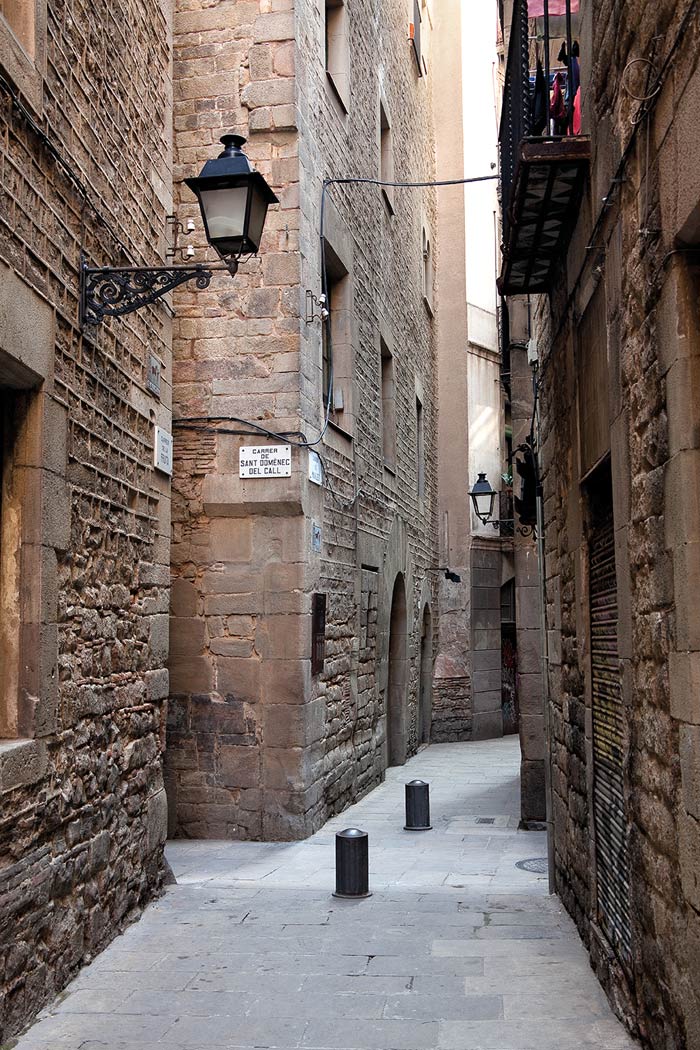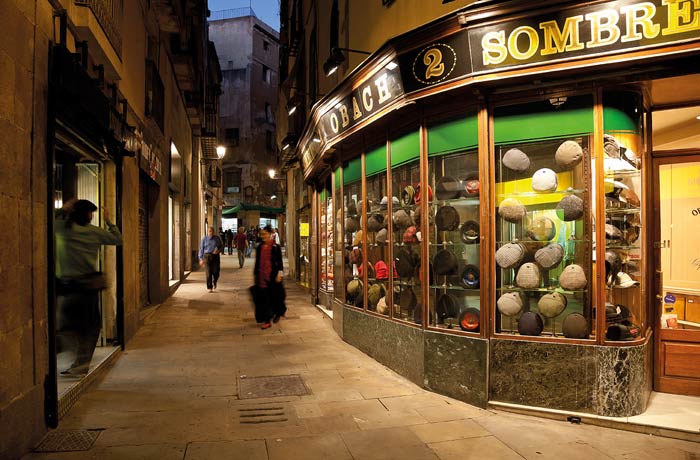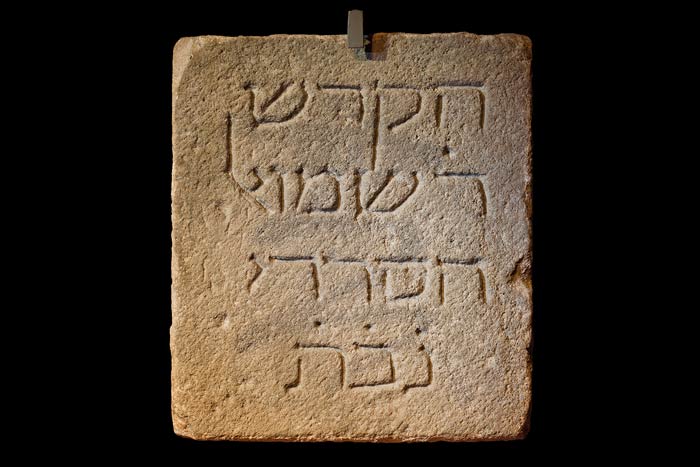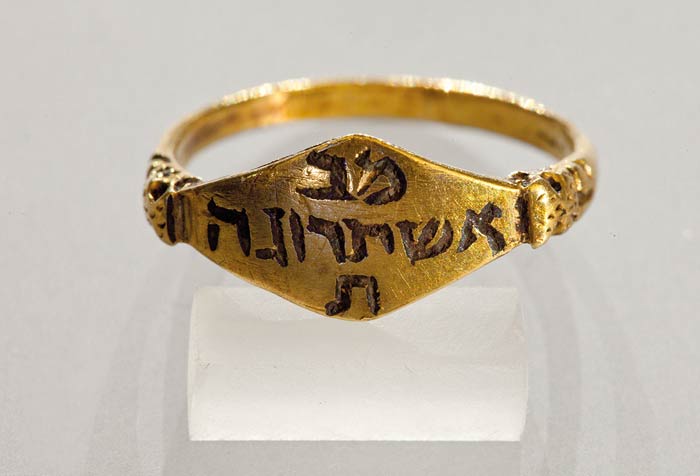Just because the call was a closed space this does not necessarily mean the Jews lived isolated. In Montjuïc,
the mount of the Jews, as well as the cemetery they possessed farmland and some houses and towers. On the
Barcelona plain they owned a lot of land, in the main vineyards, gardens, farmland
and fruit trees; some of this land they cultivated themselves and others loan collateral.
The plain area where they had the most properties were, inter alia, Magòria, Bederrida,
Les Corts, at Collserola, the outskirts of Rec Comtal... They also had houses and
workshops in Sant Jaume square and stalls at the Plaza del Blat market. Around Miracle
(the current space of Paradís Street where the Roman temple used to be) was the abode
in the 11th century of the Jewish money-changers Bonhom, Enees and David in a space
which recalled a residential area and which later was left outside the Main call area.
Main call occupied the north-eastern quadrant of the Roman city. Some remains of the wall can
still been found from the Roman urbanisation inside the houses situated between the
Bany Nous and Arc de Sant Ramon del Call streets. The Roman streets conserved are those of Sant Domènec and Sant Honorat,
former decumani minori; Volta street, the current Sant Sever street and Bajada de Santa Eulàlia; a former
cardo minimus and Call street, the former cardo maximus which stretched to the Roman gate and which was
diverted at some point and adopted the shape it still has today. Traces can still
be found of another cardo minimus, which has now disappeared, and other medieval cul-de-sacs. The limits of Main call were Call street and Castell Nou street to the south; Sant Honorat street, to be precise the
line of houses between Sant Honorat and Bisbe street, to the east; Sant Sever street
and Bajada de Santa Eulàlia as far as the Roman wall to the north and a dividing line
between the streets of Arc de Sant Ramon del Call and Banys Nous to the west. However,
in the mid-13th century the King authorised doors and windows to be opened in the
Roman wall and the limits were expanded with the urbanisation of Avinyó and Banys
Nous streets.
The Jews of Barcelona grouped together in Main call between the 12th and 14th centuries, though in stricter fashion as from the 13th
century. In 1275 King Jaime I received a reminder from Pope Gregory X of the need
to delimit the Jewish districts which was apparently not being fully complied with
in Barcelona.
